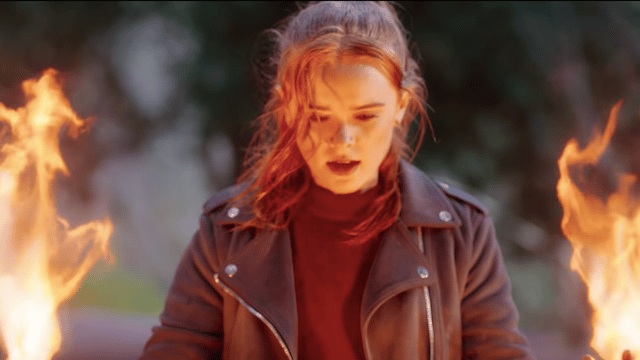Read also:
How to Watch FX Live Without CableHow To Watch AMC Without CableHow to Watch ABC Without CableHow to Watch Paramount Network Without CableA dark ‘n’ gritty spinoff of the popular Nickelodeon cartoon, Fate: the Winx Saga looks incredible, but relies on tired plot twists.
Adapted from the Nickelodeon show Winx Club, Netflix’s new series Fate: The Winx Saga attempts to reboot the long-running favorite with gritty live action to fit on the homepage somewhere between The Chilling Adventures of Sabrina and Cursed. It’s a visually stunning fantasy quest centered around young women that has all the magic it needs to fly but hasn’t yet learned to focus its potential within.
Winx Saga follows Bloom (Abigail Cowen), an outsider from “The First World” brought into the magical world of Alfia, a magical school where students learn to control their emotions and thus their magic. With the help of her suitemates, Aisha, Terra, Musa, and Stella, Bloom begins to discover more about the magical world, its occult history, and her mysterious connection to it. Soon, dark forces threaten to penetrate the protective barriers around school and heart.
As with any sort of teens vs. the world story, success depends on the chemistry between the core group. Fortunately, the women at the center of this series are a charming ensemble. Cowen has a gentle doe-eyed post-Fanning persona that works for the fae-genue newcomer. As Bloom’s best friend Aisha, Precious Mustapha embodies a strength within a character that is tragically one dimensional on the page. Eliot Salt’s Terra shoulders the show’s topical messaging about bullying and self-confidence in the opening half of the series with an endearing charm that turns Terra from a straw man into an actual character with an inner life.
As the empath Musa, it would have been easy for Elisha Applebaum to be manic, stoic, or a clumsy mixture of the two extremes, but instead Applebaum keeps her head and shows us what her character is feeling through her controlled expression. It’s really Stella, the Regina George of the school, who has the most noticeable growth in narrative and performance. Hannah van der Westhuysen delivers a dynamism to her paper-doll character as she awakens to her privilege and seeks to betray it. By the time the Scooby gang needs to come back together to vanquish the season foe, the camaraderie is well established and helps mark the journey we’ve been on with these women.
As with any sort of teens vs. the world story, success depends on the chemistry between the core group. Fortunately, the women at the center of this series are a charming ensemble.
If you’re a fan of the truly bonkers original animated series, with its obviously Anime-inspired hyperstyle, you may be shocked at how Winx Saga is decidedly un-bonkers. Gone are the wilding color pallets, the technicolor effects, and the blinding sparkles. This is a cool kid’s fairy university. TV-MA. Everything is muted, earthy, and overcast — think Voldermort comes to Forks, Washington. The magic sparkles, sure, but overall it seems like showrunner Brian Young (Vampire Diaries) was trying to awkwardly mature a property that resisted maturity in interesting visual ways. These are fairies in a magical university, would some more jewel tones have hurt anybody?
Not only does the visual “maturation” not really suit the material, the narrative elements also never quite reach an engaging complexity. What’s most disappointing about Winx Saga is the limits of its imagination. But these limits are not unique to them, they’re unfortunately mundane motifs that pervade and constrict mainstream fantasy.
The first of these is the exhausting insistence on imagining a fantasy world built on “pure” lineages. While the series uses this crypto-eugenic language to differentiate goodies from baddies, it fails to offer alternative kinships. It’s a shame they couldn’t imagine a more radically connected world. This is especially dangerous when you have your hero realize they are a part of this lineage.
Once that happens, bloodlines, identity, responsibility, and power (in this case societal and magical) collide to reaffirm white supremacist value narratives. Those from the purest lineages are born to lead. Winx Club tries to counter this by amping its representation of identity politics, but ultimately falls into yet deeper traps of the anti-Black imagination.

In its attempt to signal a wokeness to its hoped-for youthful audience, Winx adds Dane (Theo Graham), one of two Black characters, who is realizing their bisexuality. This is all well and cute. But admitting his true sexuality would dramatically disturb the main group, so Dane can only find acceptance of his queerness when he’s with the anti-establishment “wrong crowd.” While a well-intended addition, the series defaults to the tired trope of tying queerness to darkness. That this happens to the only other Black character defaults to racist historical narratives casting Black sexuality as devious and evil.
But the series lets down Aisha the most. Without much cause to be, she immediately becomes Bloom’s lackey attendant. All too often, Aisha has to literally extinguish Bloom’s emotional outbursts and the series defaults to her as the voice of Common Sense, emotionally nannying the group towards the right thing to do. Where the other members of the suite get (relatively) complex emotional journeys, Aisha gets very little. She’s already self-possessed which, while seeming progressive, leaves her with nowhere to go. Instead, she’s left behind as the one-dimensional caretaker.
Though Winx Club almost certainly didn’t set out with these intentions, the reliance on tired and conventional plot elements unintentionally highlights the inability for mainstream fantasy to think beyond itself, to truly change the problems in its foundation instead of merely calling attention to problems without fixing them. As the Saga (a word that promises far too much up front) continues, Young and other showrunners would do well to improve on these predictable problems they’ve written into their world. Otherwise, Fate: The Winx Saga risks ending up like the word ‘Winx’ itself, meaning nothing.
Fate: the Winx Saga premieres on Netflix January 22nd.